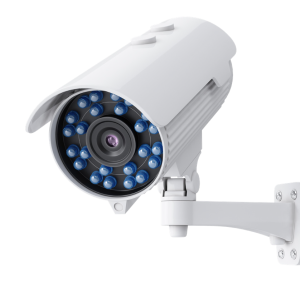THE 100-METER DISTANCE LIMITATION FOR COPPER CABLING CHANNELS HAS LONG BEEN THE INDUSTRY STANDARD FOR NETWORK DESIGNERS, INSTALLERS, AND MANAGERS TO GET THE MOST RELIABLE AND CONSISTENT PERFORMANCE OUT OF THEIR NETWORKS. However, as smart building device deployments and PoE applications push network devices farther away from telecommunications rooms, the 100-meter limit is stretching enterprise and industrial environments to consider alternative solutions.
What is the 100-Meter Standard?
Prior to the first TIA 568 standard, each networking vendor used their own proprietary cabling components and architecture. Some systems used coax while others used twisted pair, and maximum cabling lengths varied by whichever proprietary system the vendor used. Ultimately, these aspects meant there was no interoperability between vendor systems.
To address these issues, the 1991 TIA/EIA-568 cabling standard created a “structured cabling” architecture. The standard established a standardized twisted-pair horizontal cabling system design that was vendor agnostic, allowing for interoperability for both cabling and devices. Also, no knowledge of the intended use was required for any given channel, allowing for a system that could support any device and easily handle equipment changes and upgrades.
The standard established “universal” cabling systems. Computer and networking device vendors could design transmission equipment based on the maximum worst-case media scenarios, the TIA-568 standard created a predictable electrical performance distance with a 100-meter horizontal cabling distance, effectively allowing these networking devices to guarantee performance within the standard distance.
When 100 Meters Isn’t Enough
Networking is vital to more and more enterprise functions outside the traditional office space. Educational and corporate campuses span long distances, with many indoor and outdoor locations. Warehouses, distribution centers, and sports facilities are massive structures that require long distances of networking infrastructure to keep them running. Additionally, as buildings become smarter, smart devices like cameras, access controls, operational building controls, and wireless access points could be placed throughout these locations, on multiple floors, perimeter fences, parking lots, and distant security booths.
Long distances can create sub-optimal performance conditions for networking infrastructure. What are the options for overcoming the 100 meter distance challenges?
Telecommunications Room or a Remote Telecommunications Enclosure and Switch
Adding a telecommunications room, or enclosure with a switch, maintains use of standards-based cabling system design, allows for cabling vendor interoperability, and guarantees device functionality and interoperability at any location. Also, this solution maximizes flexibility, facilitating moves, adds, and changes.
Between construction costs, operational cooling costs, and additional network equipment, adding a telecommunications room or enclosure is the highest cost option. Also, this option doesn’t work if space is at a premium.
Link Extenders or Media Converters
When cost is an issue, link extenders and media converters are a good solution as they are lower cost than adding spaces and switches. They provide centralized management, providing both data and power, and a power backup, to the end device from the head-end closet. These solutions also guarantee device functionality, future interoperability, and distance capabilities well beyond 100 meters.

Link extenders and media converters can create additional potential points of failure, especially in outdoor environments. It is highly recommended that these solutions have surge protection in outdoor applications. Lastly, component costs are higher than simple cabling costs.
Single-Pair Ethernet
Single-pair Ethernet is an emerging technology that carries both power and data, with the potential to support channel lengths up to 1,000 meters. It also is based in a familiar technology: twisted-pair cabling.
Since single-pair Ethernet is an emerging technology, there are no commercially available building automation devices yet. It also has limitations when it comes to: power levels, which are currently less than Class 4 PoE power; data rates, with 10 Mb/s limitations beyond 40 m; and a limited number of industrial control devices.
Of course, there is also standard twisted pair cable solutions.
Cable manufacturers have produced cables with “enhanced” performance for as long as category cables have existed, creating Cat 5e, Cat 6 and Cat 6A cables with headroom to perform above the standard. Many claims in the market today state that they support distances beyond 100 m depending on Ethernet speed and PoE power level, but these extensions are not without risk of performance issues. Want to learn more about how to take advantage of your twisted-pair cable for greater distances, or design a network architecture to go farther? Check out our webinar Moving Beyond the 100m Standard.

Making a Sustainable Difference on the Jobsite
Product packaging like boxes, reels, and bags create large amounts of jobsite waste, especially for network deployments that require large quantities and a variety of networking products. As part of our commitment to sustainability, we are constantly taking strides to reduce the amount of jobsite waste that those packages would create.
With GREENPACK™ bulk packs and Sustainably Smart Packaging, we are designing our packaging to use less materials, while also using recycled and recyclable materials. These packaging choices eliminate the need for single-use plastics and reduce the amount of produced material that will be thrown into a landfill.
Key benefits of our GREENPACK Sustainably Smart Packaging include:
- A reduction of 30,000 pounds of plastic per year in jobsite waste with fully recyclable cartons, bulk packs, and no single-use plastics.
- Environmentally responsible box materials are 100% kraft paper printed with eco-friendly, soy-based inks and minimal ink coverage.
- Packaging is designed for smarter installation with perforated windows for easy product identification, hand holes for easy transit, and information entry fields on the box.
- GREENPACK bulk packs save an estimated 75 minutes of installation time per 1,000 cords.
“We introduced GREENPACK Bulk Packs for copper jacks more than 10 years ago,” said Kirk Krahn, senior product manager at Leviton Network Solutions. “And we’re excited to expand our GREENPACK bulk packs to include copper patch cords. Combined with Sustainably Smart Packaging, this is the latest reinforcement of our commitment to simplifying jobsite activities for contractors and protecting the environment by reducing single-use plastics and minimizing overall waste.”
For more information on this and other GREENPACK Bulk Pack options, visit www.Leviton.com/Greenpack





